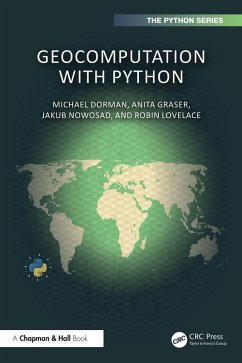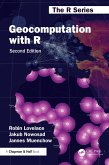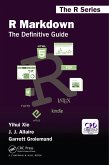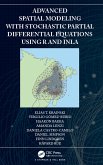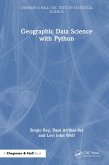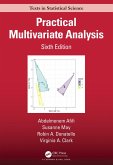Key features:
- Showcases the integration of vector and raster datasets operations.
- Provides explanation of each line of code in the book to minimize surprises.
- Includes example datasets and meaningful operations to illustrate the applied nature of geographic research.
Another unique feature is that this book is part of a wider community. Geocomputation with Python is a sister project of Geocomputation with R (Lovelace, Nowosad, and Muenchow 2019), a book on geographic data analysis, visualization, and modeling using the R programming language that has numerous contributors and an active community.
The book teaches how to import, process, examine, transform, compute, and export spatial vector and raster datasets with Python, the most widely used language for data science and many other domains. Reading the book and running the reproducible code chunks within will make you a proficient user of key packages in the ecosystem, including shapely, geopandas, and rasterio. The book also demonstrates how to make use of dozens of additional packages for a wide range of tasks, from interactive map making to terrain modeling. Geocomputation with Python provides a firm foundation for more advanced topics, including spatial statistics, machine learning involving spatial data, and spatial network analysis, and a gateway into the vibrant and supportive community developing geographic tools in Python and beyond.
Dieser Download kann aus rechtlichen Gründen nur mit Rechnungsadresse in A, B, BG, CY, CZ, D, DK, EW, E, FIN, F, GR, HR, H, IRL, I, LT, L, LR, M, NL, PL, P, R, S, SLO, SK ausgeliefert werden.

